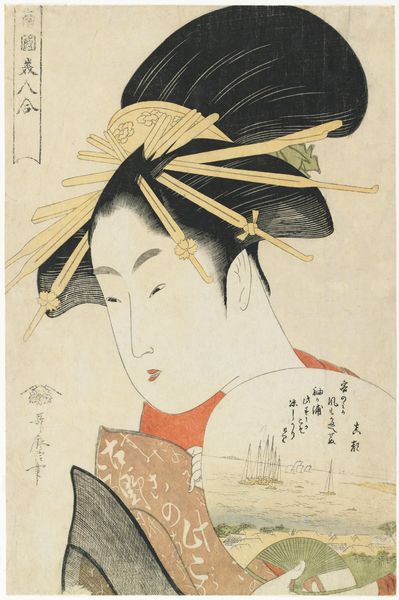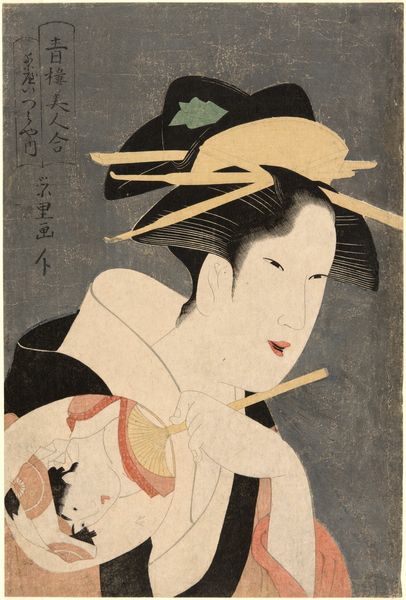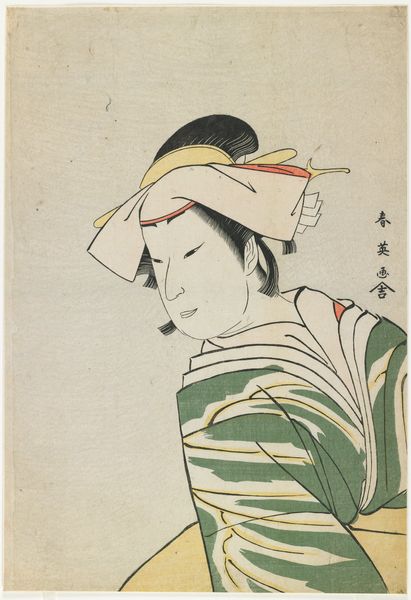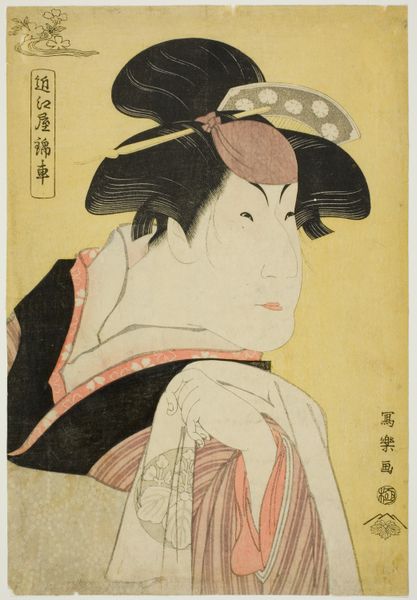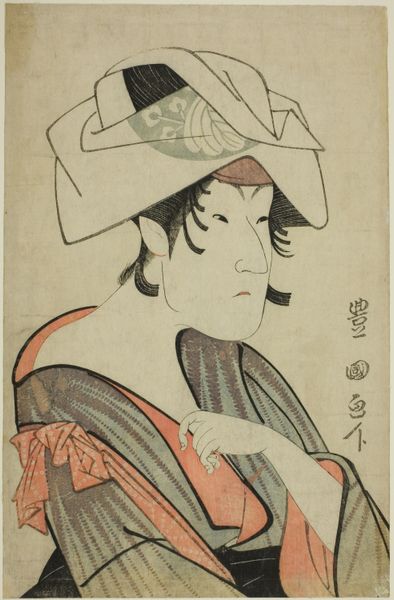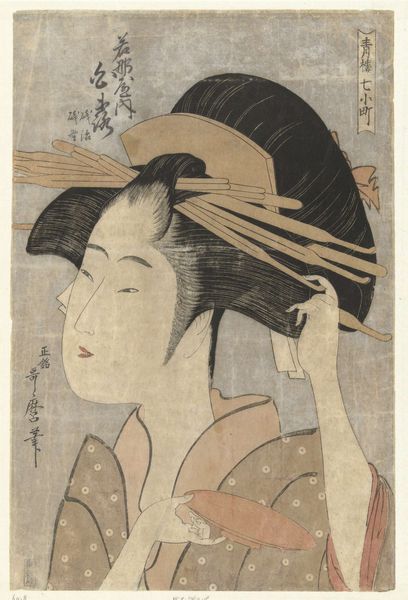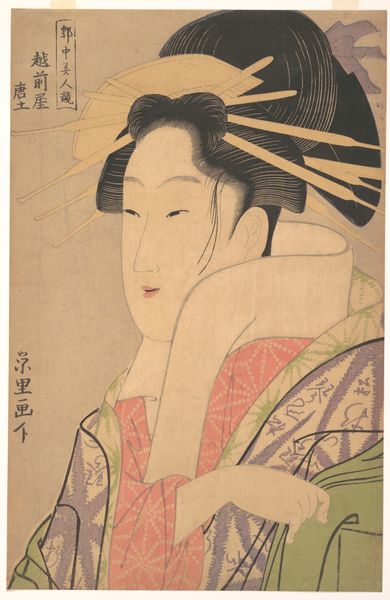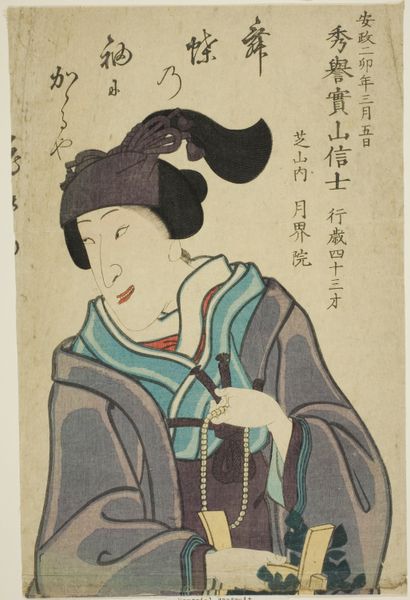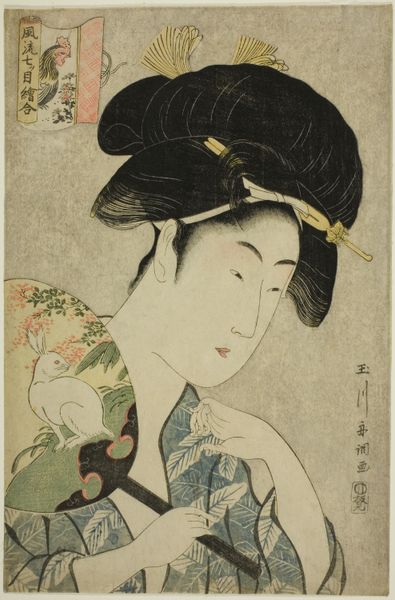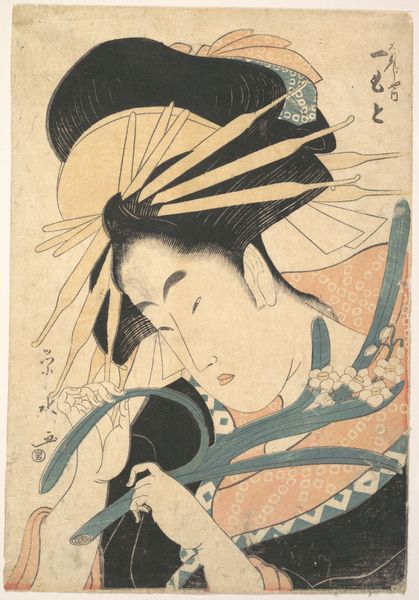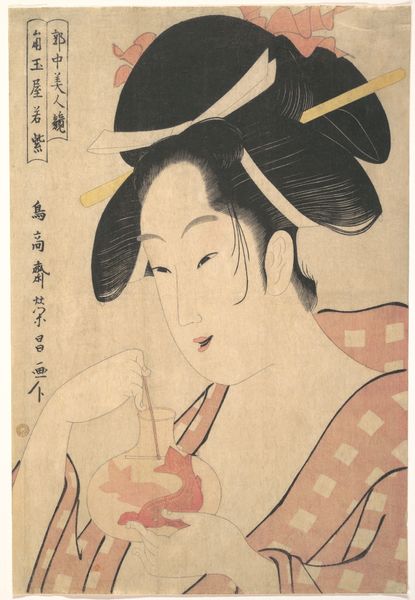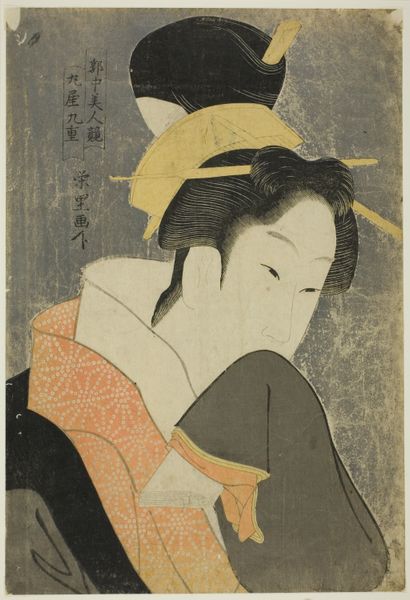
print, ink, woodblock-print
#
portrait
# print
#
asian-art
#
caricature
#
ukiyo-e
#
japan
#
historical fashion
#
ink
#
woodblock-print
Dimensions: 15 3/8 × 10 3/16 in. (39 × 25.8 cm) (image, sheet, vertical ōban)23 × 19 × 1 1/2 in. (58.42 × 48.26 × 3.81 cm)
Copyright: Public Domain
This is a woodblock print of Tomimoto Toyohina by Kitagawa Utamaro, a leading artist of ukiyo-e in Japan, active in the late 18th century. Utamaro's prints capture the floating world of pleasure quarters, theaters, and fashionable life in Edo, now Tokyo. This image presents a portrait of a woman, her hand delicately placed against her cheek, seemingly lost in thought. The print’s composition, with its emphasis on line and flat areas of color, speaks to a sophisticated urban audience. The details of her elaborate headdress and kimono are carefully rendered. The print reflects the cultural values of the era, including the importance of beauty, refinement, and leisure. The scene also provides scholars with invaluable insights into the social and economic life of Edo Japan. Utamaro's work was part of a larger commercial culture, meeting the demands of a public eager for images of its own world. We can learn more through careful examination of contemporaneous literature, theater, and other visual culture. Approaching artworks through the lens of social and institutional history enriches our understanding.
Comments
minneapolisinstituteofart almost 2 years ago
⋮
Tomimoto Toyohina was a much sought-after geisha (entertainer) who performed narrative ballads accompanied by the shamisen. She was one of several non-prostitute beauties, including teahouse waitresses, whom Utamaro depicted repeatedly in the early to mid 1790s. Here she wears a headdress called agebōshi, used by fashionable women to protect their oiled coiffures from dust and wind when they went out. For this image, the printer rendered the agebōshi in pale pink mica to suggest the texture of silk. This composition is from a six-print series comprising half-length portraits of famous beauties. The women are not identified directly, but their names are given in hanji-e, or picture riddles, adjoining the title cartouche. Utamaro may have used this device to circumvent an edict issued in 1793 that prohibited the naming of women in ukiyo-e prints unless they were prostitutes. Here, a lottery box (tomi), duckweed (mo), and a whetstone (to) serve to “spell” Tomimoto; a door (to), a lantern to suggest night (yo), and a doll (hina) signify Toyohina. This practice ceased in 1796 when a new proclamation specifically forbade the use of picture riddles.
Join the conversation
Join millions of artists and users on Artera today and experience the ultimate creative platform.
